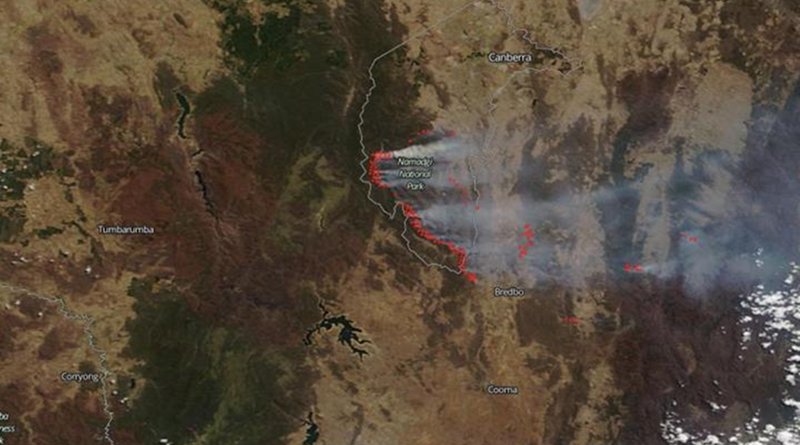Australia’s Orroral Valley Fire Consumes Over 155,000 Acres In A Week
NASA’s Terra satellite saw yet another fire, known as the Orroral Valley Fire, break out in the Canberra region of Australia, specifically in and around the ‘Namadgi National Park. In one week, these fires have consumed 62,988 hectares (155,646 acres) according to the Australian Capital Territory Emergency Services Agency as of Feb. 04, 2020 (2:30 am local Australian time).
The Department of Defence in Australia has reported that a firefighting helicopter’s landing lights created the heat needed to spark the new fire. Since the area is tinder-dry, any bit of heat can provide the ignition for a new blaze.
NASA/NOAA’s Suomi NPP satellite also captured an image of the fires using their Day/Night band on the VIIRS (Visible Infrared Imaging Radiometer Suite) instrument. At night the fires can clearly be seen in this image from February 02, 2020. The fire line of the new blaze is extremely close to the city of Canberra, the capital of Australia. This area is under a State of Emergency until at least Sunday. Fire crews have, to date, been able to save all structures in the Australian Capital Territory.
NASA’s satellite instruments are often the first to detect wildfires burning in remote regions, and the locations of new fires are sent directly to land managers worldwide within hours of the satellite overpass. Together, NASA instruments detect actively burning fires, track the transport of smoke from fires, provide information for fire management, and map the extent of changes to ecosystems, based on the extent and severity of burn scars. NASA has a fleet of Earth-observing instruments, many of which contribute to our understanding of fire in the Earth system.
Satellites in orbit around the poles provide observations of the entire planet several times per day, whereas satellites in a geostationary orbit provide coarse-resolution imagery of fires, smoke and clouds every five to 15 minutes.

